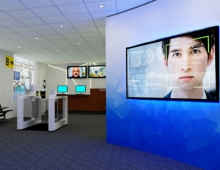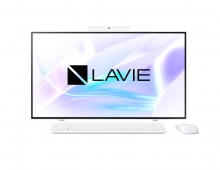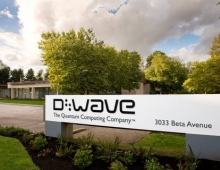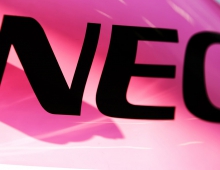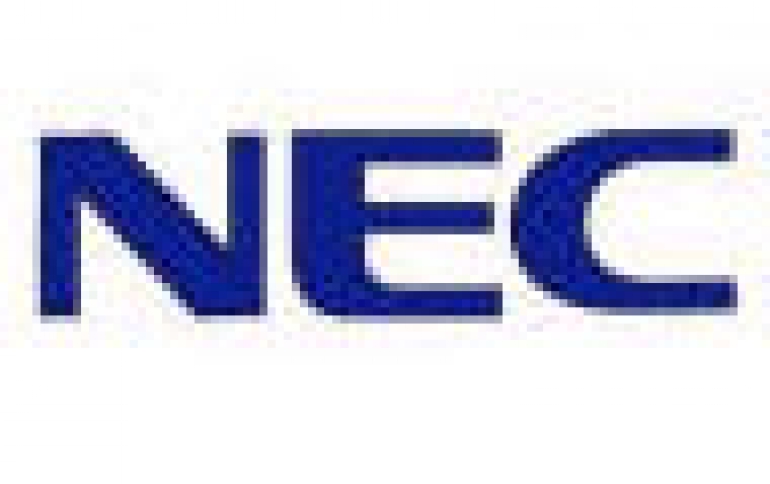
NEC looks forward to next-gen DVD
With the imminent release of 16-speed DVD write speeds and dual-layer DVD recorders already on the market, the DVD optical format will soon max out, paving the way for next generation blue laser products.
But if you can't wait for a 16-speed drive, Andrew Wyllie, product manager of NEC's Business Equipment Division, told us that current 12-speed drives are something to be wary of.
He said that the speed was never made official by the DVD Alliance or DVD Forum - the consortiums behind the + and - formats, respectively.
'There are no Japanese companies making 12-speed drives, because it's not a standard,' he said. But because a couple of months following the launch of a new speed drive the price bottoms out, some of the other Asian manufaturers such as those in Taiwan wanted to keep momentum going with a 12-speed version.
But, he said, there is no complementary 12-speed media to accompany the drives. You simply use 8-speed discs spun that much faster. 'They've simply speeded it up a bit - but haven't put in the R&D because of the fast development cycle,' said Wyllie. And this increases the risk of failed write sessions or the liklihood that a disc written to on a 12-speed drive won't read on other drives.
But the market moves so fast that this type of intermediate fudge is probably inevitable.
Dual-layer DVD burners only arrived in May, but Wyllie says that NEC will have switched to manufucturing only dual-layer drives after July.
And one of the driving forces behind the market is the OEM - the Dells and HPs - that demand the latest technology to give them the best margins.
For example, NEC was originally behind the DVD-R format, but came round to support +R, 'because the PC builders wanted +,' said Wyllie.
Next year - June, according to Wyllie - will see the inauguration of the next generation of optical storage technology: blue laser-based drives.
As with the -R and +R formats, there's going to be a battle over this. There are two formats, both based on blue laser technology. Blu-Ray offers discs with up to 27GB a layer and supported by Hitachi, LG, Matsushita, Pioneer, Philips, Samsung, Sharp, Sony, and Thomson. The alternative is HD-DVD, developed by Toshiba and NEC, and offering up to 15GB per layer.
It may come as little surprise that Wyllie is backing the HD-DVD format, despite the commoditising powers of box builders such as Sony in the other camp.
'No-one would touch Blu-Ray,' he says. And he has his reasons. 'This will be a fight,' he says, 'But it will be the movie studios that will decide.'
One of the key benefits of HD-DVD is that optical disc manufacturers can produce the media on existing production lines, making the discs much cheaper. And the initial buyer of large volumes of these discs is going to be Hollywood.
But to benefit from hi-definition DVD films, you'll need an HD-TV telly and player.
HD-DVD is backwards-compatible - the laser can read both blue and red frequencies. So you'll still be able to play your DVD discs on it.
Blu-Ray is not. Having said that, Sony has developed a unit that incorporates both Blu-Ray and a red laser for DVDs and CDs, but with more components comes more expense.
So the consumer too will be persuaded by the cost. And this, thinks Wyllie, will drive them to the HD-DVD format.
Furthermore, reading Blu-Ray discs is a very delicate operation. The laser has to be positioned close to the media, and the disc needs a caddy to keep it in the optimum position. 'Laptops can't support a caddy,' said Wyllie: and with PC shipments expected to even between laptops and desktops over the next few years, that's just one more reason he thinks NEC is backing the right horse this time.
Yet the war isn't one. 'The real fight is for the licence,' says Wyllie. 'Sony still makes a penny on floppy disk drives.' Whoever wins the industry to back its technology stands to make a fortune on licence fees, even if it's an inferior technology. The battle between VHS and Betamax is testament to that.
From pcPRo

